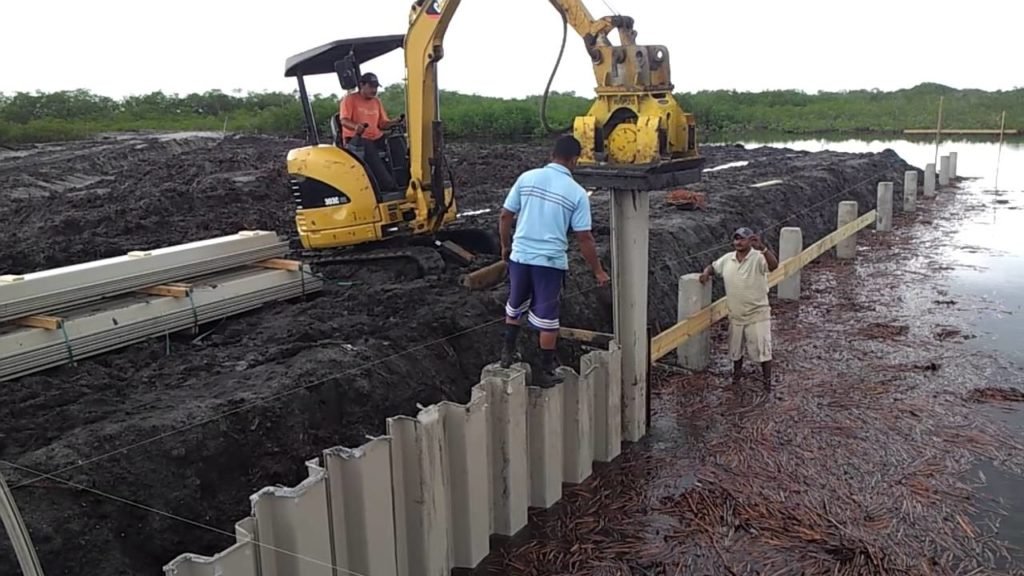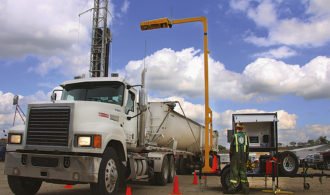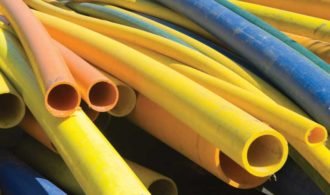Sheet piling is a method used to retain earth for construction projects using numerous thin sheets which are slotted together using interlocking edges.
This creates a solid wall (permanent or temporary) which holds back earth and/or water and transfers pressure from the high side of the wall to the soil.

Anchors can also be used to further strengthen the piles if necessary.
To find out a little more information on what sheet piling is and how it’s used, we spoke with Sheet Piling (UK) Ltd, the UK’s leading sheet piling contractors.
Types of sheet pile
The sheets are usually made from steel although in certain situations other materials such as concrete or vinyl are used.
However, steel is preferred as it provides a very high resistance to driving stresses, is relatively lightweight and can be adapted by welding or bolting.
Hot rolled and cold formed
In situations where the piles need to be driven deeper and required a lower permeability, they are produced from steel at extremely high temperatures.
This gives them a very tight interlock and these sheets are also usually larger than their cold formed counterparts.
Z-Type
These are probably the most common type of sheet pile and are named as they roughly take the shape of a Z.
The locking system is located as far away from the neutral axis as possible as this increases the strength-to-weight ratio.
U-Type
U-Type piles are very similar to Z-Types, except they have the interlock on the neutral axis.
Flat Web
Instead of relying on their bending strength and stiffness like other forms of sheet pile, flat sheets are formed in circles and arcs to create cells which are held together through the tensile strength of the interlocks.
Pan type
These sheet piles are a lot smaller than other types and so are usually only used in shorter walls which don’t need to be driven as deep such as in drainage ditches and golf courses.
Where is it used?
Sheet piling is employed in any construction or excavation process which takes place below ground, including underground car parks, basements, pump houses and for building foundations.
It’s also used in marine structures such as seawalls and bulkheads.
How is it installed?
Sheet piling is usually installed using a vibratory hammer to drive the piles into the ground.
However, in instances where the soil is too dense, impact hammers are used, or if there are noise concerns, or vibratory hammers might damage surrounding structures, then the piles are hydraulically driven in.
Check out this animation for a visual idea of how sheet piling works.
What are the advantages?
Sheet piling is mainly used because it has an extremely long service life and should need little to no maintenance over the years.
It’s also very popular for temporary structures as the piles can be removed once the project is completed and used again.
Not only is this cost-effective, but it’s also more energy efficient!
Are there any disadvantages?
Installing sheet piling can be a very loud process, which is an issue if the project is in a residential area.
The success of sheet piling is also very dependent on the soil in which it is being driven into, and boulders and cobbles can make it very difficult the achieve the desired depth.




